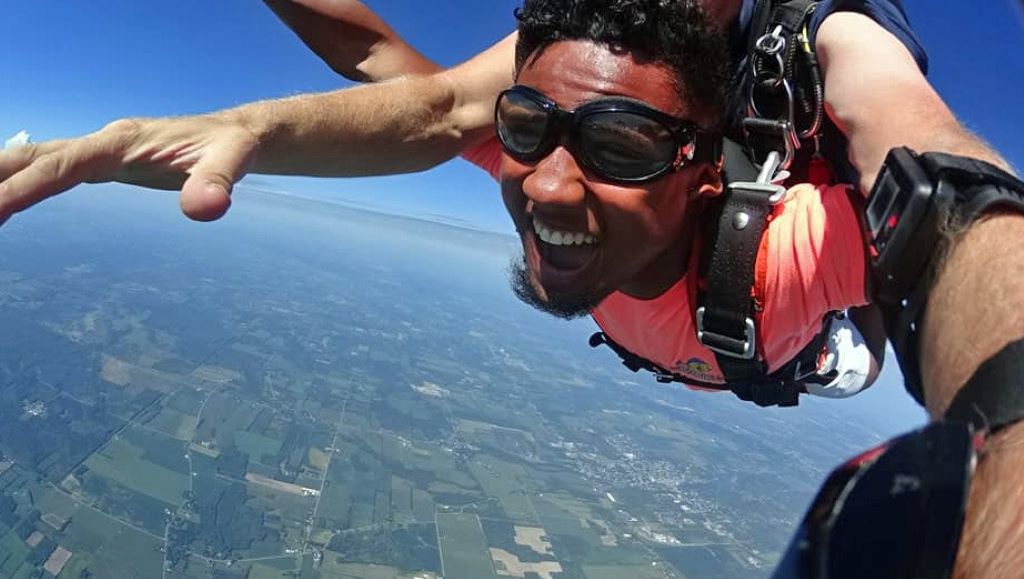Do you freeze when standing at the edge of a tall building? Or feel paralyzed just by thinking about being in high places? You are not alone. Fear of heights, or acrophobia, affects millions of people worldwide. In fact, studies show that over 5% of the global population suffers from this condition, making it one of the most common phobias. But the good news is that acrophobia can be managed, and in many cases, overcome entirely. This article will explore proven strategies to help you conquer your fear of heights, with insights from psychology, expert tips, and real-world success stories.
Understanding the Fear of Heights
Acrophobia is an extreme fear of heights that triggers anxiety when a person is elevated above the ground. For some, it is a mild discomfort, while for others, it’s an overwhelming, debilitating fear. According to a study conducted by the National Institute of Mental Health, about 5.3% of adults experience this fear, which often begins in childhood or adolescence. While some individuals have a natural aversion to heights due to evolutionary survival instincts, others develop the fear through traumatic experiences or learned behaviors.
What sets acrophobia apart from normal fear is the intensity and disproportionate reaction to heights. For example, someone might feel faint, dizzy, or panic-stricken even when standing on a safe balcony or low platform. These extreme reactions disrupt daily life, limiting opportunities and experiences. Fortunately, with the right approach, overcoming the fear of heights is possible.
The Psychological Root of Acrophobia
Understanding the psychology behind acrophobia is crucial to overcoming it. According to Dr. David Barlow, a renowned psychologist and expert in anxiety disorders, acrophobia is often rooted in past experiences or perceived danger. The brain perceives height-related situations as threatening, triggering the body’s “fight-or-flight” response. The fear is reinforced each time an individual avoids a high place or experiences anxiety at such altitudes.
Cognitive-behavioral therapy (CBT), one of the most effective treatments for acrophobia, works by gradually changing these thought patterns. By challenging irrational thoughts and confronting feared situations in a safe, controlled environment, individuals can retrain their brain to react differently. This method, known as exposure therapy, is often paired with relaxation techniques to reduce anxiety.
Gradual Exposure: The Key to Overcoming Fear
One of the most effective ways to overcome the fear of heights is through gradual exposure. The concept of exposure therapy is rooted in the principle of desensitization, which involves slowly introducing the individual to the feared stimulus. This allows the person to gain control over their fear in small, manageable steps.

Step-by-Step Exposure Process:
- Start Small: Begin with low heights, like standing on a chair or looking out of a second-floor window.
- Visualize Heights: Use virtual reality or videos of high places to get accustomed to the idea of being at a height.
- Progress Gradually: Move to higher locations, like a small bridge or a rooftop, only when comfortable with previous steps.
- Build Confidence: Celebrate small victories to reinforce positive outcomes and encourage further exposure.
Research supports this approach, indicating that people who gradually face their fears can develop more confidence and resilience over time.
The Role of Relaxation Techniques
While exposure therapy is vital, relaxation techniques are equally important in overcoming acrophobia. Techniques such as deep breathing, progressive muscle relaxation, and mindfulness can help individuals manage anxiety in height-related situations. The goal is to calm the nervous system and reduce the physical symptoms of anxiety, such as rapid heartbeat or dizziness.
Deep Breathing Exercise:
- Inhale deeply for a count of four.
- Hold for four seconds.
- Exhale slowly for a count of four.
- Repeat several times to restore a sense of calm.
By practicing these techniques regularly, individuals can build a mental toolkit to use when facing feared situations.
Cognitive Behavioral Therapy (CBT) for Acrophobia
Cognitive-behavioral therapy (CBT) is one of the most widely recommended treatments for acrophobia. CBT focuses on changing the negative thought patterns that fuel the fear. It helps individuals identify irrational beliefs, such as “I will fall if I’m high up” or “I cannot handle being at a height,” and replace them with more rational, balanced thoughts.
A key component of CBT is cognitive restructuring, where patients learn to challenge their negative thoughts and develop healthier coping mechanisms. For example, someone might learn to think, “I am safe and stable here,” rather than focusing on the fear of falling.
Studies have shown that CBT, combined with exposure therapy, yields some of the most significant results in treating phobias, including acrophobia. According to a study published in the Journal of Anxiety Disorders, 60-80% of individuals with phobias experience significant improvements after CBT.
Mind Over Matter: Rewiring Your Brain
Another effective strategy is to focus on rewiring the brain’s response to heights. Neuroplasticity, the brain’s ability to reorganize itself by forming new neural connections, plays a crucial role in overcoming fears. When repeatedly exposed to a feared situation without harm, the brain learns that the situation is not dangerous, and the anxiety gradually decreases.
Mindfulness meditation can also be beneficial in rewiring the brain’s reaction to fear. By practicing mindfulness, individuals can focus on the present moment and detach from fear-driven thoughts. Over time, this shift in perception helps reduce the intensity of the fear response.
Success Stories: Real People, Real Results
Overcoming the fear of heights is not just theoretical. Many individuals have successfully confronted their acrophobia and improved their quality of life. For example, Sarah, a 34-year-old woman, shares her journey: “I couldn’t even look out of a second-story window without panicking. After a few months of CBT and exposure therapy, I was able to go on a hot-air balloon ride. It was life-changing.”
Another success story is Mark, a 50-year-old man who had avoided any situation involving heights for years. After attending therapy and practicing relaxation techniques, he was able to enjoy hiking in the mountains with his family. He says, “The fear never fully went away, but I can manage it now. It no longer controls my life.”
These personal stories prove that overcoming acrophobia is not only possible, but it’s also transformative.
Read More: Spa Care 101: Your Ultimate Guide to a Pristine Personal Oasis
Expertise Tips: Overcoming Fear of Heights
- Set Realistic Goals: Break down your exposure steps into small, achievable goals. Celebrate each step forward, no matter how small.
- Stay Consistent: Consistency is key. Overcoming any fear requires persistent effort, so stay dedicated to the process.
- Seek Professional Help: If your fear is severe, consider working with a therapist who specializes in phobias.
- Incorporate Support: Have a trusted friend or family member accompany you during exposure exercises to provide emotional support.
Featured Snippet:
How Can You Overcome Your Fear of Heights?
To overcome your fear of heights, start with gradual exposure by facing smaller heights before progressing to more challenging ones. Practice relaxation techniques such as deep breathing and mindfulness. Cognitive-behavioral therapy (CBT) is highly effective in restructuring negative thought patterns associated with heights. Combining exposure with these techniques can significantly reduce anxiety and help you reclaim control over your fear of heights.
FAQs
-
How long does it take to overcome the fear of heights?
Overcoming acrophobia varies from person to person. It can take anywhere from a few weeks to several months, depending on the severity of the fear and commitment to treatment.
-
Can medication help with fear of heights?
In some cases, medication may be prescribed to help manage anxiety symptoms associated with acrophobia. However, therapy is typically more effective in addressing the root cause of the fear.
-
Is acrophobia hereditary?
Yes, there may be a genetic component to acrophobia. However, environmental factors and personal experiences also play a significant role.
-
How can I start exposure therapy on my own?
Begin by gradually exposing yourself to situations involving heights, starting with small steps. Use virtual simulations or low platforms to build confidence before tackling more significant challenges.
-
Can acrophobia be completely cured?
With the right combination of therapy, exposure, and mindset, many people can manage or even completely overcome their fear of heights.
-
What if I can’t handle exposure therapy?
If exposure therapy is too overwhelming, consider seeking professional guidance. A therapist can help you proceed at your own pace and incorporate other techniques like relaxation exercises.
-
Are there any support groups for acrophobia?
Yes, support groups and online communities can provide a sense of camaraderie and encouragement as you work to overcome your fear.
Conclusion
Overcoming your fear of heights is a journey, but with the right tools and strategies, it is entirely achievable. Whether through gradual exposure, relaxation techniques, or therapy, each step you take brings you closer to living a life unburdened by acrophobia. Remember, it’s not about eliminating the fear entirely, but about managing it in a way that empowers you to enjoy the world from new heights.
Read More: The Importance of Setting Goals in Couples Therapy




